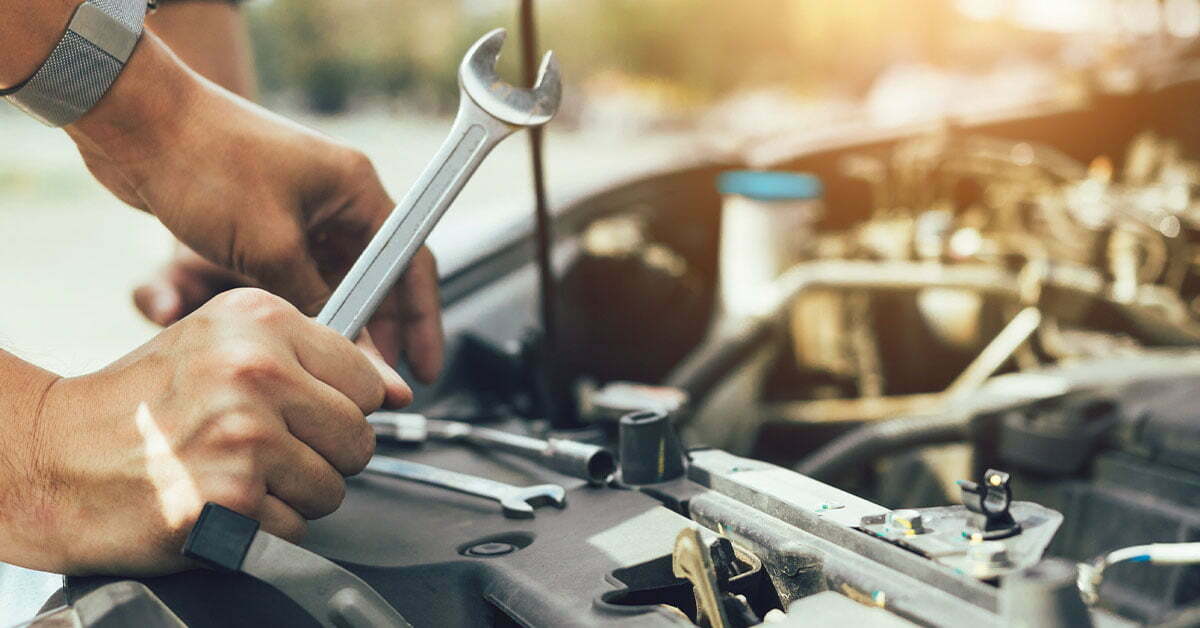You reverse out of your driveway, try to shift gears and you hear a horrible clunking, grinding noise. Maybe you’re driving along and the engine is revving higher but you’re not accelerating, then the dreaded warning light or message appears on the dash. The question now is: transmission repair, rebuild or replacement? One thing is for certain – the sooner you have the transmission inspected by a professional, the less financial damage you’ll be committing yourself to.
What is the transmission?
Like nearly all components in your vehicle, the transmission is something you can’t do without. While the engine is responsible for generating the power that turns the wheels, the transmission is responsible for determining how much power reaches the wheels. Without it, you’d be stuck in one gear.
In a manual car, you engage the clutch to disengage the transmission from the engine, allowing you to change gears. Releasing the clutch re-engages the transmission and the engine, allowing power to flow through to the wheels once again.
In an automatic car, a torque converter is used to determine when to shift gears so it moves to higher gears as you accelerate and lower gears when you slow down.
As you can see, it’s an important piece of machinery. Now let’s take a look at why it might be making that horrible clunking noise when you go to change gears.
Why might you need transmission repair?
Not enough transmission fluid
A transmission needs fluid for lubrication as well as hydraulic power. Without transmission fluid, it can’t operate within the right temperature or facilitate gear shifts. If the fluid level is low, the transmission won’t be adequately lubricated, and all those moving parts are going to reach extremely high temperatures due to all the friction and eventually seize up. The good news is that transmission fluid generally lasts for around 100,000 km.
Fluid leak
Ever walked out to your car and seen a small river of red liquid snaking its way from underneath? This is the transmission fluid, and you have a leak. Obviously, this leads to the same issues as mentioned above. Unfortunately, topping up the fluid level won’t fix the problem. The leak must be found and sealed.
Blocked filter
As good as lubricating fluids are, wherever there are moving parts, there will eventually be debris. This could be dirt from the surrounding environment or smalls flakes of metal grinded off the components themselves. Filters are used to catch this debris. If they become clogged, fluid can no longer flow through them easily and – you guessed it – the issues from a lack of lubrication arise. Thankfully, changing a filter isn’t a big expense, as long as you get to it before further damage is caused to the transmission itself.
How do I know if I need transmission repair?
Picking up on transmission issues early is the key to keeping the expense down. So, what are the tell-tale signs?
- As mentioned previously, a clunking sound when changing gears is a sure sign that you need to have the transmission looked at.
- Driving along and the engine is revving higher but the car is not accelerating, commonly referred to as, gear slippage. This is a definite sign that your transmission needs to be inspected.
- A transmission warning light or message is suddenly displayed.
- Also mentioned previously, red fluid trickling out from underneath the car means you have a leak and transmission fluid is escaping.
- The smell of burning is never a good sign. In a car, it can point to any number of problems, the transmission included. It’s usually a result of poor lubrication and metal components heating up, grinding against each other and burning.
Get on to transmission repair early with BM Tech
Repairing the transmission can be as simple as replacing fluid, a filter or patching a leak. If left for too long, it can change from a repair to a rebuild or replacement, in which case your wallet will suffer when it needn’t have. Whenever you pick up on any of the signs mentioned above, immediately get in touch with the team at BM Tech so we can nip any transmission issues in the bud.
Oh! One more thing. Long-Life Transmissions don’t need to be serviced – really?
Many manufacturers are now installing transmissions which have no servicing schedules or are not required to be serviced – ever! Well, as you can imagine, the decision to never service a transmission has the auto service industry is absolute amazement, with the transmission repairers rubbing their hands together thinking about all that money they’re going to make!
Our strong recommendation on these long-life transmissions is to perform a service and filter change every 100,000 kms. As mentioned previously, servicing the transmission with fresh, uncontaminated fluid and a new, free-flowing filter will go a long way in keeping those transmissions nice and reliable.
